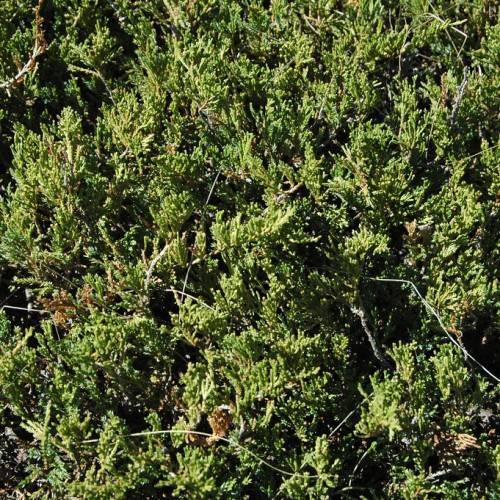
creeping juniper
Juniperus horizontalis 'Pancake'
Cycle:
Perennial
Watering:
Minimum
Hardiness Zone:
2
Flowers:
Flowers
Sun:
Full sun
Soil:
Sandy Loamy Clay Rocky
Fruits:
Fruits Ready In
Leaf:
Yes
Growth Rate:
Low
Maintenance:
Low
Salt Tolerant:
Yes
Care Level:
Low
watering
Creeping juniper (Juniperus horizontalis 'Pancake') should be watered regularly during the spring and summer months, with about 1 inch of water applied once a week. Water in the morning to give the leaves and soil time to dry out before nightfall to reduce the chance of fungal diseases. During the winter months, reduce watering to about once a month, or less if the soil is wet. Make sure not to over-water and always check the soil's dampness first.
sunlight
Creeping Juniper (Juniperus horizontalis 'Pancake') needs direct, full sunlight for maximum growth. This plant species thrives best when exposed to 6-8 hours of direct sunlight per day, preferably in the morning and early afternoon. During the late afternoon and evening, dappled shade can be beneficial for this species, as it can help to prevent the foliage from becoming overly dry or scorched. In summer months, the sun's intensity can be relentless, so it's important to make sure the plant has access to some shade during the hottest hours of the day to prevent sunburn. In winter, while some direct sunlight is still required, the temperatures tend to be colder, so the plant will need less of it. With the right amount of sunlight, creeping juniper will reward its keeper with a beautiful, cascading cascades of lush green foliage.
pruning
Creeping junipers (Juniperus horizontalis 'Pancake') require annual or semi-annual pruning to promote healthy growth and develop a desirable shape. Pruning should take place in late winter or early spring when the plant is dormant. For light pruning, start by removing any dead, diseased, or damaged branches. Next, prune out any branches that are growing in a direction that you don't want. Then, reduce the length of the upright branches by 1-third to 1-half of their current length to prevent the plant from becoming too leggy. Finally, remove any shoots that are growing around the base of the shrub. Make sure that all pruning cuts are made approximately 1-quarter inch above an outward facing bud to promote even growth.
